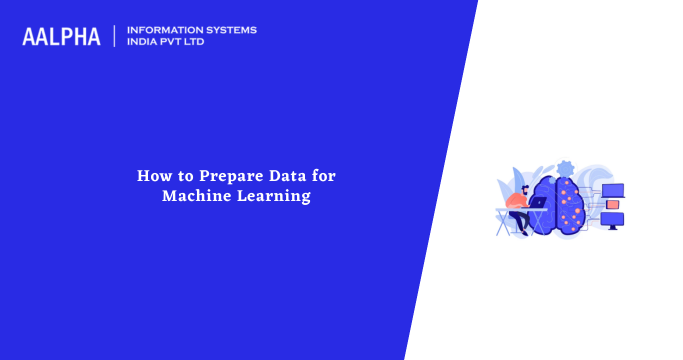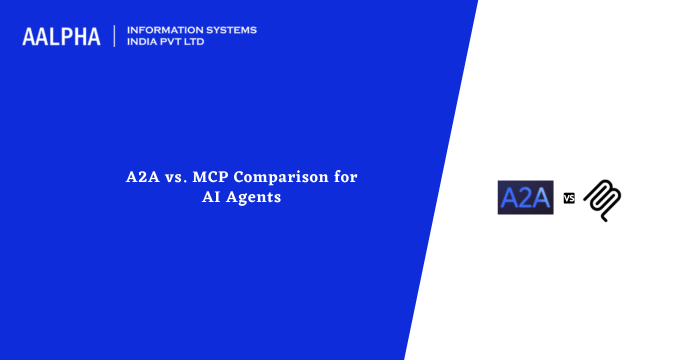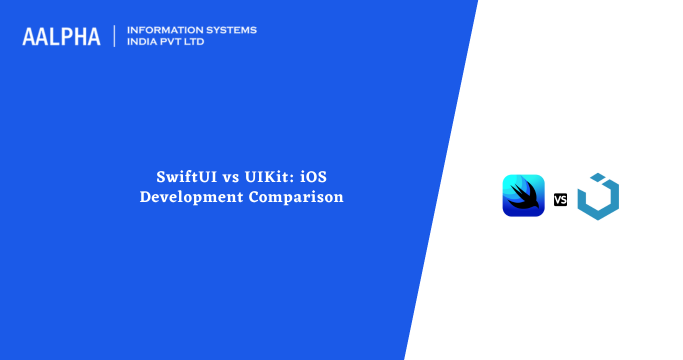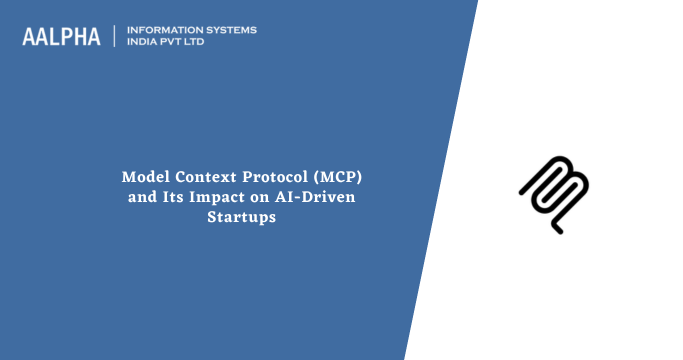AI is transforming many processes. In fact, huge and small businesses are now integrating AI into their operations as a way of creating a seamless working environment and simplifying complex and daunting tasks.
While AI offers a lot of benefits in return, it requires the feeding of accurate data and this calls for some manual tasks. The processes involve exploiting data, and this requires the integration of machine learning technology to actualize the processes. So, any organization looking forward to using data collected to automate tasks and simplify some functionalities must prepare data for machine learning as the very first step. This guide will take you through all the steps and processes you should take as you prepare data for machine learning.
Overview of machine learning
Machine learning is subset of AI technology that enables computers to learn and train based on the data it is fed. Once it masters the data patterns, it becomes easy for machines to exploit data without needing more programming.
The machine learning patterns and algorithms keep improving over time, thus making machine learning a whole technical process that can execute several tasks and functions in a busy organization.
Preparing data for machine learning
Before you even think of data, you need to implement processes that will enhance machine learning implementation. So, start by identifying the issues within your company and evaluate the tasks and functionalities of all the processes to ensure you have a machine-learning model that matches your business needs. This will enable you to prepare accurate data, feed the machine learning model, and automate tasks successfully.
Once you have a clear overview of the issues within your business, you can begin the actual process of data preparation for machine learning.
Ideally, data preparation takes place in phases, which include data collection, cleaning data, transforming data, and splitting data. Below is a detailed overview of what happens at every stage:
Collecting data
Collecting data is the first step you take when preparing data for machine learning. This phase is all about gathering data that will be used to train and finetune the machine learning model for future activities. That is why factors like quality and volume of data play a vital role in determining the best approach when preparing data.
There are three types of data for the machine learning model. They are unstructured, structured, and semi-structured data.
- Structured data – this data is organized in a specific manner. It can be in a spreadsheet or table format.
- Unstructured – this data doesn’t follow any conventional data models. Examples are audio recordings, videos, and images.
- Semi-structured – this data doesn’t have a formula, but it is partially organized because it has some structural components like metadata and tags, making it easy to understand and interpret data. JSON and XML are perfect examples of semi-structured data.
So, what makes good data? We have the quality of the data, data volume, and data structure type as described below:
The data structure will determine the best approach to follow when preparing data for ML. Of course, it is easier to organize and feed structured data in an ML model than complex unstructured data.
Again, data volume plays a major role in preparing data for ML. The large volume of data may require more work like sampling and creating subsets for easy training. Again, small data volume may require some more work, prompting data scientists to act and generate more data for effectiveness.
What’s more, data quality is a vital element too. Biased or inaccurate data will produce wrong results, and this can have some negative impacts, especially in delicate industries like healthcare, finance, and criminal justice.
After understanding what good data is all about, the next step is to think of where and how to collect the data.
Where to collect data:
- Using internal sources – these include details stored within your company, such as customer relationships, sales transactions, and information collected from respective social media platforms, among other internal sources.
- Using external sources – this includes using public resources to gather relevant data. Examples of external data sources are data-sharing communities, academic data repositories, and government data portals.
- Surveys – this method is ideal when you have a specific target audience you want to collect data from. You simply gather information based on user preference.
- Web scraping – here, you will require automated tools to get data from websites. This method can only be necessary, especially when there is no other way to access specific data. Make sure to avoid frequent requests to minimize the risk of HTTP 429 errors during the data-gathering process.
Note: all these approaches are viable, but at times, they might not get you reliable and useful data. Until then, you can go an extra step and use the following strategies:
- Collaborative data sharing – it’s all about teaming up with other researchers with the same interests as you to collect data.
- Data augmentation –This involves extracting more data from available samples and changing them by either scaling, translating, or rotating.
- Active learning – It is the collection of the best data sample for human expert labeling.
- Transfer learning – Here, you use pre-trained machine learning algorithms and patterns that align with the tasks you want to automate, then finetuning it to the machine learning model on the new data.
Data cleaning
Once you collect your data, you now need to clean it by identifying missing values, detecting any inconsistencies, and correcting any possible errors.
Ways of cleaning data for machine learning
Below are the different ways you can clean your data as you prepare it for machine learning.
- Cleaning incorrect data – here, you simply identify erroneous and inaccurate data. You can then remove the incorrect data or change the data set to meet the requirements.
- Missing data – This is quite common when preparing data for machine learning solutions. You can correct this by either deletion of missing columns or rows, interpolation, which involves extracting missing data from the points you have, and imputation which is filling the missing data with estimated or rather predicted data.
- Cleaning outliers – this incudes data that is different from other sets of data caused as a result of unusual observation, data entry errors, or measurement errors. You can either remove or change data outliers to meet the required standard.
- Cleaning duplicates – duplicates are one big issue you will always encounter when preparing data for machine learning. Data duplicates will affect machine learning predictions, increase processing time, and waste storage space. Once you identify data duplicates, you can either merge them or delete them. However, when having unbalanced datasets, duplicates can play a vital role in enhancing even distribution.
- Imbalanced data – this is a data set with one class having a lower number of data points than the other, which can cause bias by favoring the class with a higher data set. A resampling technique is used here to resolve the imbalanced data issue. Resampling is all about undersampling the majority data set or oversampling the minority class to achieve balance. Other techniques to employ when handling imbalanced data include ensemble learning, which is all about combining different models trained on different sets of data using different algorithms, and cost-sensitive learning, which is all about giving more weight to the data set with fewer points when training the ML model, and synthetic data generation which is all about adding more pints to the class with low points.
- Cleaning irrelevant data – this is data that isn’t useful in solving the existing problem. Cleaning this type of data is crucial in enhancing accurate prediction. Correlation analysis and principal component analysis are some of the ways to identify irrelevant data. You simply remove irrelevant data once you identify it.
The data cleaning step is important as it ensures the training is accurate, consistent, and complete.
Data transformation
This is the third stage of preparing data for machine learning. At this point, you have collected and cleaned the data, ready for transformation. It is all about converting the data into the machine learning algorithm for your machine learning model. This enhances accuracy and improved performance.
The techniques used under data transformation include the following:
- Encoding – machine learning works accurately with numerical values. Therefore, categorical data like animals, colors, and objects, among others, must be encoded to work as an input. Simply, encoding is all about converting categorical data into numerical values for easy interpretation by the ML model.
You can employ label encoding, ordinal encoding, or one-hot encoding techniques when converting the data.
- Scaling – scaling is all about converting data points, enabling them to fit in a defined range for easy comparison between varied variables. This is because different data sets have different measurement units, making it hard to balance between data sets with larger values and those with low values. Scaling strikes a balanced algorithm in such cases.
- Log transformation – this is all about setting up a logarithmic function in data set variables. This technique is highly effective, especially when training data sets with a large range of values or skewed data. Through log transformation, you can easily attain an even distribution of data for the ML model.
- Normalization – normalization is more of scaling. While normalization changes data set distribution, scaling changes the range of data sets. The other processes are the same.
- Dimensionality reduction – this is a technique used in reducing or rather limiting the number of features in dataset variables. The goal is to maintain the only dataset or information that will help solve the existing issue.
T-distributed stochastic neighbor embedding, linear discriminant analysis, and principal component analysis are among the techniques used to achieve dimensionality reduction.
- Discretization – this is the process of transforming continuous variables into discrete variables. Examples include weight, temperature, and time, among others. A practical example here is about people’s height. While it can be measured in numbers, it can be hard for the ML model to categorize the datasets. So, instead of highlighting numbers, the data sets are programmed into tall, medium, and short. In the end, the complexity is reduced, and the ML model can automate the processes effectively.
- Feature engineering – well, we can skip feature engineering while talking about data transformation as you prepare data for machine learning.
Feature engineering is more of a technique or process used to prepare data for machine learning. It is all about picking, transforming, and creating features in a set of data. It, therefore, includes computational, mathematical, and statistical techniques to get the most useful data in the existing datasets.
Data splitting
This is the final phase of preparing data for machine learning. It involves all the data collected into subsets where the data is broken down for easy training, validation, and testing.
Training dataset plays a role in teaching the machine learning model to identify patterns and algorithms between target variables and inputs. This is the largest dataset.
Validation of the dataset is all about evaluating the data subset’s overall performance on the ML model while training, enabling finetuning, and adjusting the components for improved performance. Dataset validation is also significant in preventing overfitting the training data.
Testing dataset, on the other hand, is used to analyze the overall performance and functionality of the machine learning model. Once the training and validation processes are over, the testing is then performed only once.
Data splitting helps in validating the viability if the machine learning model to execute or automate tasks to solve the existing problem. Otherwise, the model’s functionality will be poor, with inaccurate results when data splitting isn’t done, especially with new data.
Depending on the existing problem you want to solve, you can choose different data splitting techniques. Below are the common data splitting techniques you can implement:
Stratified sampling –here, you simply divide the data into subsets and then sample each subset. This technique is effective where there are imbalanced datasets with values in one class exceeding the other. As a result, stratified sampling ensures an even distribution of training and testing datasets for each class.
Cross-validation – this technique involves dividing data into folds or subsets where some subsets are used for performance evaluation while others are used for training the model. The process is repetitive, ensuring each set serves as testing at least once.
Here, you can employ a leave-one-out cross-validation approach or a k-fold cross-validation approach. The cross-validation technique enhances the overall performance of the model and its functionality.
Random sampling – you will split the data randomly when employing this technique. Where there is a large volume of datasets, this technique is the most viable one. Again, you can employ a random sampling technique where there is no defined relationship in the existing datasets.
Time-based sampling – here, the data is used based on the specific timeframe it was collected is used for training (there is a time limit factor here). The data collected after a defined time limit is then used for testing.
This technique is effective when the time taken to collect data has been long; hence needs, the time-based sampling technique allows the machine learning model to produce accurate results.
Why data preparation for machine learning is important
Preparing data for the machine learning model will help you in the following ways:
- Enhancing the performance of the ML model
- Providing accurate prediction results in analytical processes
- Reduced analytical and data management costs
- Identifying data errors and mistakes
- Removing duplicate data for effectiveness
- Helps in making informed decisions
Conclusion
Before you implement any machine learning solution in your organization, you must have accurate data for the effectiveness of the model. While there are challenges you may experience along the way, the benefits afterward are worth every effort. Take one step after the other, as described in this guide, and you will have an effective, reliable, and accurate machine learning model for your business processes.
Any queries? Get in touch with our AI development company : Aalpha information systems!






Share This Article:
Written by:
Stuti Dhruv
Stuti Dhruv is a Senior Consultant at Aalpha Information Systems, specializing in pre-sales and advising clients on the latest technology trends. With years of experience in the IT industry, she helps businesses harness the power of technology for growth and success.
Stuti Dhruv is a Senior Consultant at Aalpha Information Systems, specializing in pre-sales and advising clients on the latest technology trends. With years of experience in the IT industry, she helps businesses harness the power of technology for growth and success.